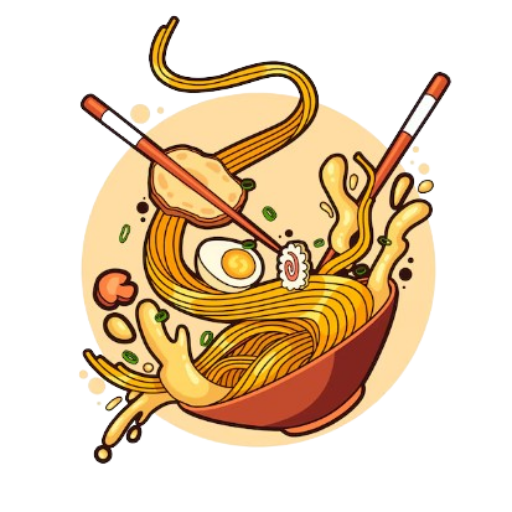Soba: A Noodle Bowl with Health Advantages

Noodles are popular in Japan; think ramen, somen, udon. However, one of the most traditional Japanese noodle meals is soba, which can be made gluten-free by using only buckwheat flour instead of white wheat flour. Soba is often produced with a combination of the two flours. Soba noodles are a great dish for every season because they can be eaten hot or cold. Soba is served cold and comes with a side of mentsuyu for dipping. In addition, it can be served hot as soba noodle soup with tempura or kamaboko fish cake slices on top. Soba noodles are tasty and nutritious at the same time, with a distinct nutty flavor and a pleasing rustic texture.
Brief History of Soba Noodles
Soba is said to have originated from Central Asia as far back as and was brought to Japan from China sometime during the Jomon Period. The first records of soba noodles are from the Nara Period (710-794), a time when buckwheat was the food of commoners and was eaten to stave off famine. Soba noodles became rooted in the traditions of Japan; in particular, a Japanese New Year’s custom is to eat soba noodles on the evening of December 31st. Called “toshikoshi soba,” this annual tradition symbolizes a long and healthy life, as the noodles are kept long and slurped up. To try this custom for yourself, among other holiday traditions, join the Japanese New Year Food Tour in Shibuya.
Source: Pixabay
Make Your Own Soba Noodles
Although it may look complicated, making your homemade soba noodles is not that hard at all, if you have the right tecnique. The ingredients are simple, just buckwheat flour, white wheat flour, and water. Combine the two types of flour and mix in the water until rough and crumbly, then knead it. The hardest part is rolling it out to an even thickness and cutting into even noodles.
Want to try it for yourself with all the special tools at your disposal to make your life easier? Join a handmade soba cooking class or browse some soba experiences to taste these healthy buckwheat noodles for yourself.
Source: byFood
Name That Soba
There are several different dishes where soba is the main star.
Here are a few variations of the most popular soba noodle dishes.
- Zaru Soba
- Kake Soba
- Tempura Soba or Tensoba
- Kitsune Soba
1. Zaru Soba
Source: Pixabay
This is one of the simplest soba noodle dishes. It consists of cooked, rinsed, and chilled soba noodles that are served in a traditional bamboo basket, is known as zaru. Alongside the noodles, you have a small bowl of dipping sauce that’s made of soy sauce, mirin, and dashi. There are also other condiments and side dishes to spice up the meal, like fresh green onions, spicy wasabi, or thin slices of nori.
2. Kake Soba
Another popular way to enjoy soba noodles is as a hot dish. For kake soba, the soba noodles are boiled then drained. The hot broth (made with soy sauce, mirin, and dashi) is then poured over the noodles. Kake soba has a very mild flavor but is usually seasoned with spring onions for freshness, and at times fish cake may be included as well.
3. Tempura Soba or Tensoba
If you’re a fan of golden, deep-fried tempura, you’ll love tempura soba. This dish can be served either hot or cold. The hot version features the soba topped with tempura, such as seafood or vegetable tempura, whereas the cold version comes with a separate bowl of dipping sauce, where both the tempura and soba should be dipped as you eat them.
4. Kitsune Soba
Another popular soba noodle dish, kitsune soba also comes in two versions: hot and cold, where the soba is topped with aburaage, a thin and slightly sweet piece of fried tofu.
Health Benefits of Soba Noodles and Buckwheat
Source: Pixabay
1. Low in Calories
Compared to noodles made solely from white wheat, buckwheat is lower in calories, so it is a healthy substitute for other types of pasta.
2. Gluten-Free
Contrary to its name, buckwheat is not actually a type of wheat, but it is actually composed of grain-like seeds. So, people with celiac disease or gluten intolerance can still enjoy soba noodles, as long as the soba is made with 100% buckwheat flour (some soba noodles are made of a mix of flours).
Gluten-free in Japan? Read our post about Gluten-Free Restaurants in Tokyo or browse gluten-free experiences on byFood.
3. Good for Your Gut
The main ingredient in soba noodles, buckwheat flour is high in fiber. Dietary fiber keeps food moving through the digestive tract and contributes to a fuller, more satisfied feeling, reducing overeating.
4. Plant Protein
There are 6-8 grams of protein in a 2-ounce (dry) serving of soba. Protein is an essential component for building muscles and bones, and increases feelings of satiety, so you feel fuller for longer. And it is a plant protein, so vegetarians and vegans alike can enjoy soba noodles. Looking for more plant-based Japanese foods? See our blog post about Vegetarian Restaurants in Tokyo and our Tokyo Vegan Guide.
Where to Eat Soba Noodles
Source: Kanda Yabu soba
If you are too busy to try making your own or you want to try out a more authentic feel, then you can dine out at a soba noodle restaurant. These restaurants are all over the country, and you’ll likely see displays of plastic food models outside the shops. You can also enjoy soba experiences during a variety of food tours and cooking classes in Japan, and taste these healthy buckwheat noodles for yourself.



